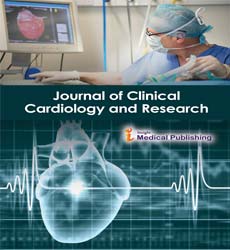The role of interleukin-17 in the pathogenesis and treatment of severe neutrophilic asthma
Abstract
Asthma is a common chronic airway disease affecting approximately 334 million people worldwide, and about 7 million children globally. Approximately 10% of patients with asthma have severe refractory disease, which is difficult to control on high dose inhaled corticosteroids and long-acting β2-agonists (LABA). Half of these patients have neutrophilic asthma. Neutrophilic asthma is a phenotype of asthma characterized by severe and persistent airflow obstruction, frequent exacerbations and hospitalization, and is associated with status asthmaticus, and fatal asthma. Immunopathologically, it is characterized by the presence of high levels of neutrophils in the lungs and airways. Interleukin-17 secreted by Th17 cells, plays a key role in the pathogenesis of neutrophilic asthma by expressing the secretion of chemoattractant cytokines and chemokines, such as IL-8 for the recruitment and activation of neutrophils. Activated neutrophils produce an oxidative burst, releasing multiple proteinases, reactive oxygen species, and cytokines which cause airway epithelial cell injury, inflammation, airway hyperresponsiveness, and remodeling. Most patients with neutrophilic asthma are unresponsive to high dose inhaled corticosteroids, and to eosinophilic asthma targeted biologics, such as omalizumab (anti-IgE), mepolizumab, reslizumab (anti-IL-5), benralizumab (anti-IL-5R), dupilumab (anti-IL-4Rα), tezepelumab (anti-TSLP). Blockage of IL-17 with monoclonal antibodies has not been successful in the precision treatment of neutrophilic asthma. Brodalumab, a monoclonal antibody against IL-17 receptor did not meet end point in clinical trials. Similarly, blockade of IL-8 receptor CXCR2 produced minimum asthma control. Treatment of neutrophilic asthma is challenging. The most appropriate approach is to use single inhaler tripple therapy incorporating a long-acting muscarinic antagonist; and macrolide antibiotics, such as azithromycin. Accompanying airway remodeling and airway muscle hyperplasia and hypertrophy may require bronchial thermoplasty (BT). This bronchoscopic therapy is effective in patients with severe, uncontrolled asthma irrespective of the phenotype. BT has been shown to reduce the severity of asthma symptoms, exacerbations, and to improve lung function, and health-related quality of life. BT has also a corticosteroid-sparing effect and can allow patients to wean from glucocorticoids.
Open Access Journals
- Aquaculture & Veterinary Science
- Chemistry & Chemical Sciences
- Clinical Sciences
- Engineering
- General Science
- Genetics & Molecular Biology
- Health Care & Nursing
- Immunology & Microbiology
- Materials Science
- Mathematics & Physics
- Medical Sciences
- Neurology & Psychiatry
- Oncology & Cancer Science
- Pharmaceutical Sciences
